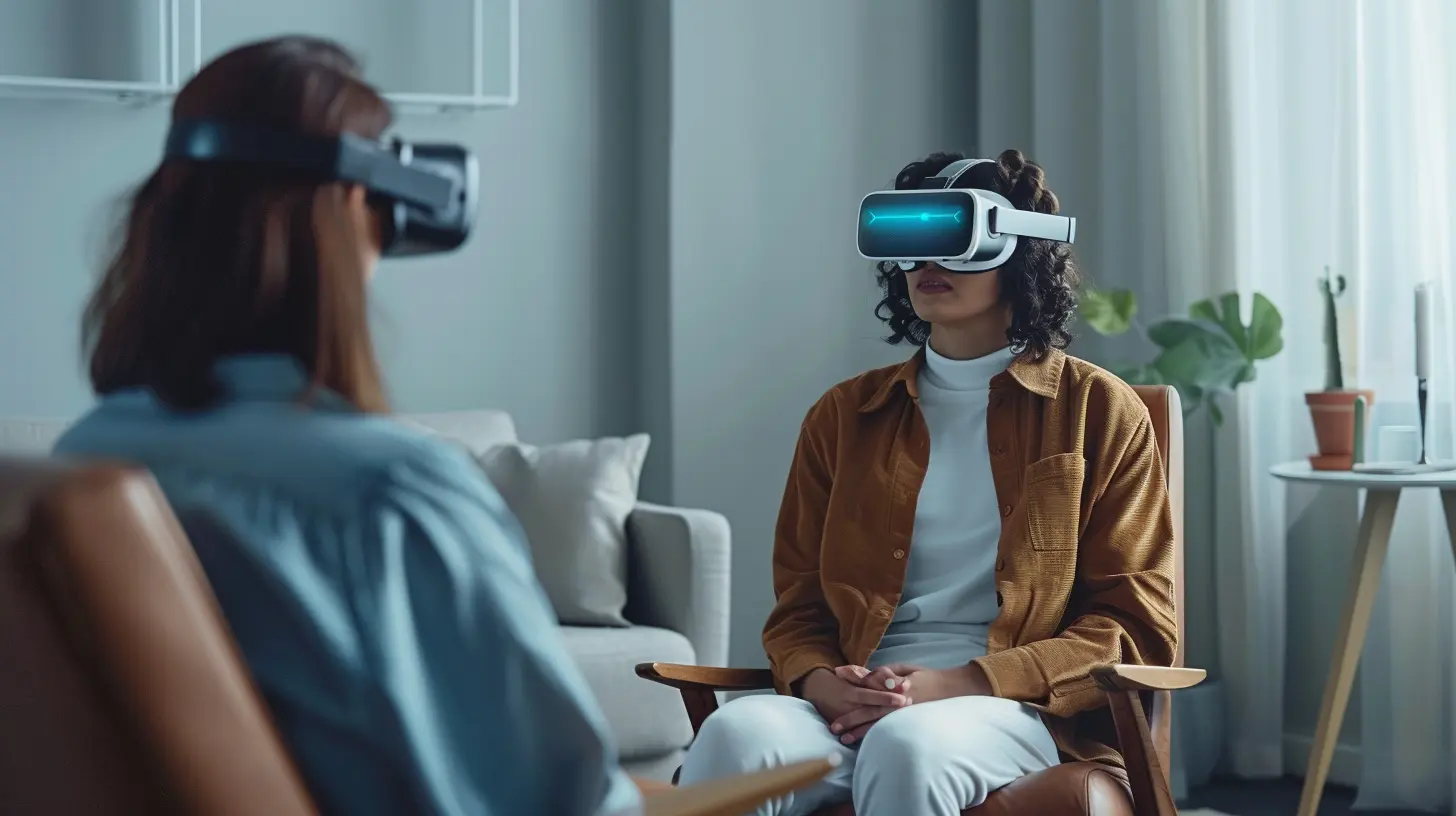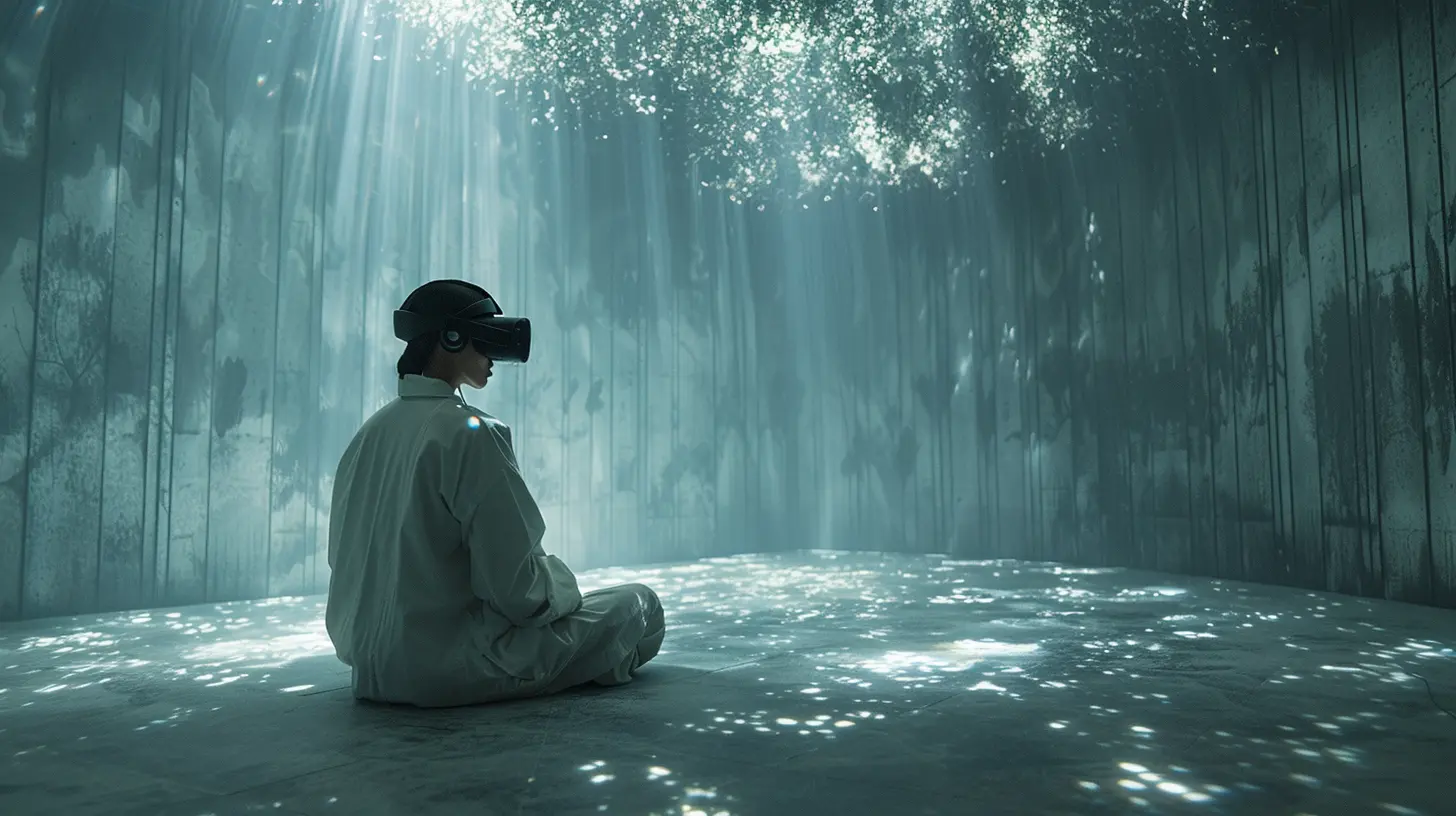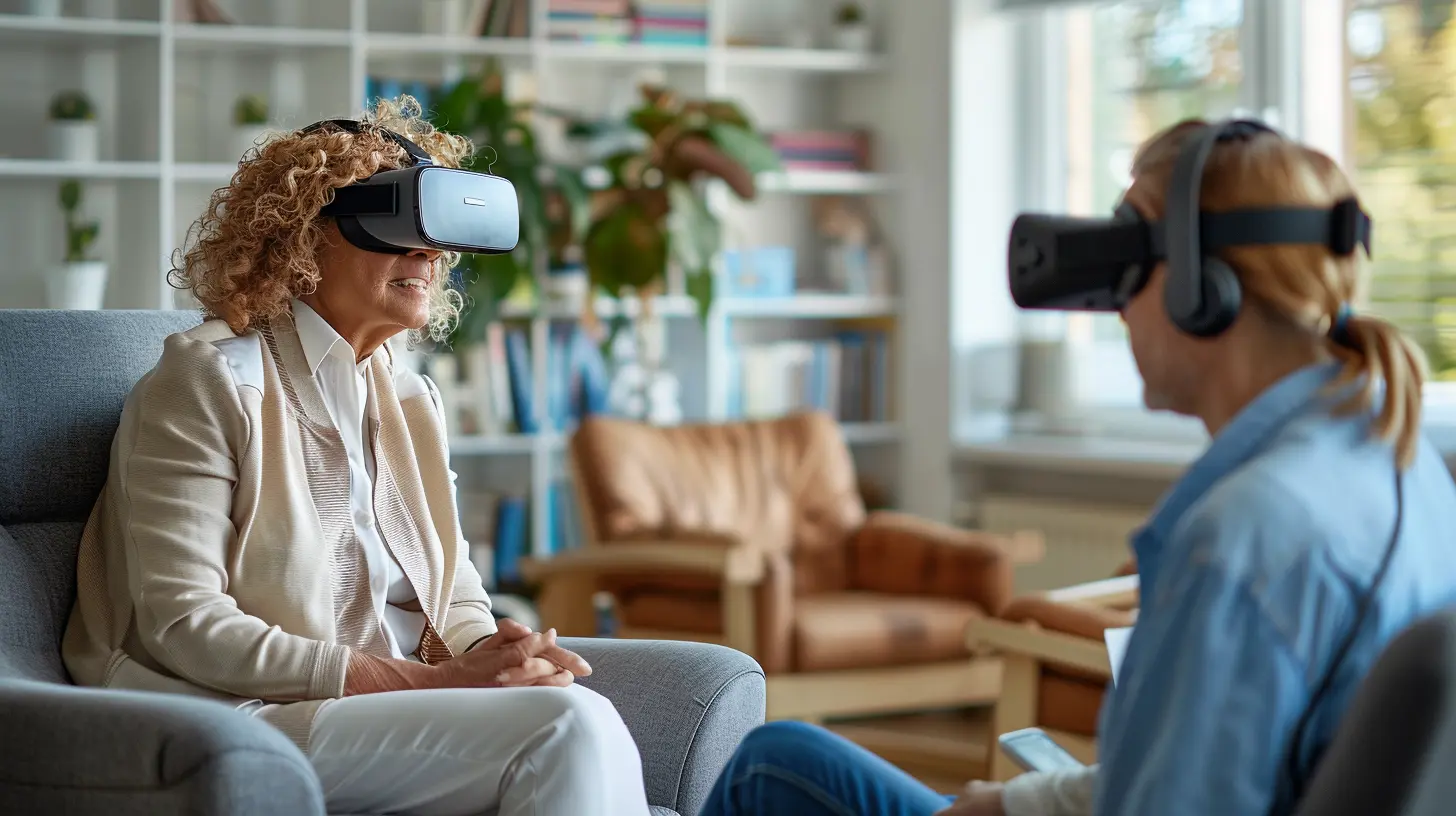Virtual Reality Therapy: A New Frontier in Mental Health Treatment
3 November 2025
Alright, buckle up—and no, not for a rollercoaster ride (although we’ll get close)—because we’re diving headfirst into Virtual Reality Therapy. Yep, that’s right. Therapy just leveled up and turned into something straight out of a sci-fi flick. Only instead of fighting aliens or dodging pixelated zombies, we’re using virtual reality (VR) to wrestle with anxiety, PTSD, phobias, and a few of those inner demons we've all got hiding in the digital closet.
Now before you roll your eyes and say, "What’s next, a hologram therapist named Dr. Feelgood?"—hold that sarcastic thought. Because this stuff is legit. And spoiler alert: it’s got the potential to revolutionize how we deal with mental health, big time.
Let’s plug in, shall we?
So, What's Virtual Reality Therapy Anyway?
Imagine sitting on a couch—not a therapist’s dusty old office couch, but your own, with a VR headset strapped to your face. One minute you’re in your living room, the next, you’re standing on a virtual cliff as part of exposure therapy. Or you’re in a calming forest, guided by a serene voice helping you stave off a panic attack.Welcome to Virtual Reality Therapy, a method that merges traditional therapy techniques with immersive, computer-generated environments. It’s like mental health counseling meets The Matrix—but with less Keanu and more cognitive restructuring.
Therapists are using VR to simulate situations that would be difficult, expensive, or just plain unsafe to recreate in real life. Best part? You can finally fly in therapy. Take that, gravity.
Why Virtual Reality in Therapy? Is Talking Not Enough Anymore?
Look, talking it out is great. Nobody’s knocking your therapist’s couchside chats. But sometimes, our brain needs to see, hear, and feel things to truly “get it.” That’s where VR struts in like a boss with 3D visuals, surround sound, and interactive scenery.Think about it: if you have a fear of public speaking, your therapist might tell you to “imagine an audience.” But let’s be honest, your mental audience is probably just your cat wearing sunglasses. With VR, you’re actually standing in front of a room full of people—albeit virtual ones—looking at you like you're a TED Talk superstar.
VR therapy helps bridge the gap between imagination and real-life experience without the real-world consequences. You get the exposure, minus the embarrassment of passing out mid-presentation at your cousin's wedding because you tried to face your fears too hard, too fast.
Here’s How It Actually Works (No Magic Wands Involved)
You’re not just thrown into a VR world like you’re in a video game duel. There’s a method to the madness:1. Assessment Time: Your therapist figures out what you need to work on. Anxiety? Fear of flying? PTSD from that one time your Zoom filter stuck during a company meeting?
2. Custom VR Setup: Based on your needs, a specific VR experience is selected. It’s tailor-made like a designer suit—only this one fits your brain.
3. Immersion: With headset on, you’re guided through the experience. A therapist is there (in real life or virtually) to monitor your reactions, steer the session, and calm the storm if things get too intense.
4. Feedback Loop: After the session, the therapist helps unpack everything. Like, “How did it feel when the airplane door closed?” or “Did your virtual audience laugh at your joke about oatmeal?”
5. Repeat and Progress: As sessions go on, you gain confidence, reduce fear, and start to retrain your reactions. Boom. Growth.
What Mental Health Conditions Can VR Therapy Help With?
You’d be surprised how many conditions have RSVP’d to this digital party:1. 🛫 Fear of Flying
Hate flying but love tropical getaways? VR can simulate takeoff, turbulence, and landing—without the peanuts. Practice makes perfect, and with enough sessions, you might not even flinch during turbulence.2. 📢 Social Anxiety
Virtual boardrooms, parties, or coffee shop meetups can help you rehearse interactions without worrying about accidentally spilling something on yourself in real life.3. 🧠 PTSD
VR therapy has been used for veterans and trauma survivors to safely revisit and reprocess traumatic events in a controlled setting. It's known as "exposure therapy," and it’s helping people heal in ways traditional talk therapy sometimes struggles to.4. 🕷️ Phobias
Spiders, heights, speaking in public, clowns named Chuckles—VR can simulate your fear so you can face it head-on without actually touching an 8-legged monster.5. 😔 Depression and Anxiety
Creating calming VR environments—like a beach at sunset or a peaceful meadow—helps reduce stress and improve mood. Think of it as a digital mini-vacation for your brain.Okay, But... Is It Weird to Be in Therapy with a Headset On?
Not gonna lie—it can feel funky at first. Like, “Why am I in a digital elevator with a floating therapist head telling me to breathe?” But honestly? Most people get used to it fast. Your brain starts to believe what it's experiencing is real. It’s the same reason we yell “NOOOO!” when our Jenga tower collapses—we’re emotionally invested in something that’s not exactly reality, but close enough to fool us.Plus, the tech is getting sleeker. Goodbye clunky astronaut helmets, hello sleek headsets that don’t make you look like an extra in a 90s cyberpunk film.
The Science Is In: VR Therapy Has Real Results
Studies and clinical trials (yes, the legit, boring-permission-slip kind) have shown that VR therapy can produce comparable, and sometimes even superior, results to traditional therapy alone. Especially for exposure-based treatments.One study showed that veterans with PTSD had significant improvement after VR immersion therapy, with reduced flashbacks and panic symptoms.
Another? People with fear of heights experienced reduced anxiety after just a few sessions in a virtual high-rise.
In short: this isn’t just some tech bro’s startup idea. It’s evidence-based and growing stronger by the gigabyte.
Pros and Cons (Because Nothing is Perfect—Even in VR)
Let’s break it down, pros first:✅ Pros:
- Safe Space to Face Fears: You can experience challenging situations without any real-world danger.- Controlled Environment: Your therapist can fine-tune everything from background noise to weather. Yes, even sunny skies.
- Engaging and Interactive: Way more interesting than staring at a ceiling tile.
- Repeatable: Practice makes perfect, and with VR, there's no limit to how many times you can face that virtual crowd.
- Remote Ready: Some VR therapy modules can be used at home, with therapist monitoring remotely.
Now, the not-so-glam side:
❌ Cons:
- Tech Limitations: Not everyone has access to high-quality VR gear.- Motion Sickness: This is real, folks. If you get dizzy looking at a rotating fan, VR might take some adjusting.
- Cost: High-tech therapy can come with a high-end price tag.
- Human Element: Some folks miss the in-person warmth and connection of traditional therapy.
Is the Future Really Virtual?
Short answer? Probably.Long answer? Not everything will move to VR (thankfully—let’s keep actual hugs real, please). But the trend is clear: we're heading toward more tech-assisted mental health treatments. Think AI chatbots as emotional support buddies, mental health apps that track your mood, and yes, VR therapy that makes facing your fears feel like a quest in a video game.
The upside? More people may finally feel comfortable seeking help. If someone’s too shy to meet a therapist in person, a VR headset might just be their golden ticket to healing.
Does This Mean I Should Skip My Regular Therapist and Go Full Sci-Fi?
Hold your hoverboard, Marty McFly. Virtual Reality Therapy isn’t here to replace traditional therapy—it’s here to enhance it. Think of it as therapy’s cool, tech-savvy cousin who moved to Silicon Valley but still calls grandma every Sunday.You still need a trained, licensed therapist to guide the process. The difference is, the therapist now has access to a nifty tool that can take your healing to new heights (literally, if your fear is heights).
Final Thoughts: Therapy Just Got a Glow-Up
We’re in an era where healing doesn’t have to look like a couch, a notebook, and a box of tissues. It can be a fully immersive, controlled journey through your fears, obstacles, and mental hiccups—with a VR headset as your courage helmet.Whether you're navigating trauma, managing anxiety, or just curious about what therapy could feel like inside a rainforest, virtual reality therapy may be exactly what your overthinking brain has been looking for.
And if nothing else, it’s a solid way to trick your brain into thinking it's taking a hike in the Alps—without ever leaving your living room.
So, the next time someone tells you to “face your fears,” just make sure you've got your VR headset charged and ready.
all images in this post were generated using AI tools
Category:
Therapy TechniquesAuthor:

Eliana Burton
Discussion
rate this article
1 comments
Mitchell Hahn
Finally, a therapy where my couch can teleport!
November 10, 2025 at 5:26 AM

Eliana Burton
Glad you enjoyed the idea! Virtual reality truly is transforming the therapy experience in exciting ways!


